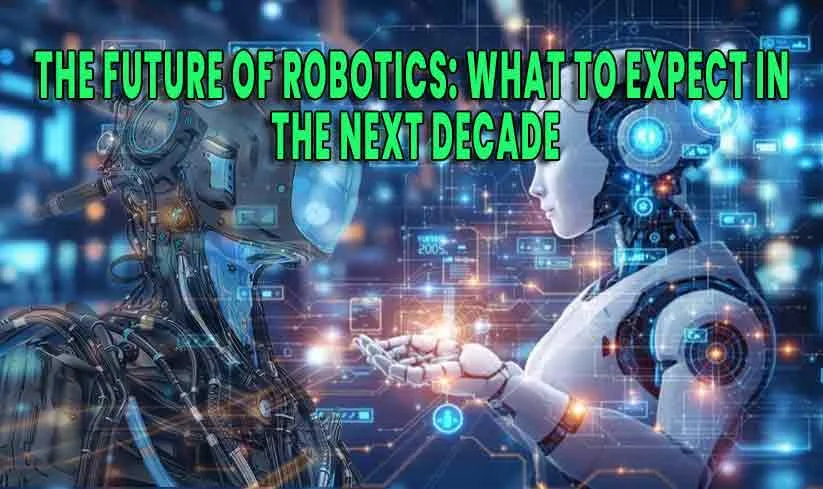The Future of Robotics: What to Expect in the Next Decade
Robotics has evolved from simple mechanical arms in factories to sophisticated AI-driven machines capable of autonomous decision-making. Over the past decade, advancements in artificial intelligence (AI), machine learning, and sensor technology have accelerated the development of robots that can perform complex tasks with minimal human intervention.
As we look ahead to the next ten years, robotics is set to revolutionize industries, reshape the workforce, and integrate seamlessly into daily life. This article explores the key trends and breakthroughs expected in robotics between now and 2034, covering healthcare, manufacturing, service industries, and even personal robotics.
1. AI and Machine Learning: The Brains Behind Future Robots
Artificial intelligence is the backbone of modern robotics. In the next decade, AI will become even more sophisticated, enabling robots to:
- Learn in Real-Time: Future robots will use reinforcement learning to adapt to new environments without explicit programming.
- Improve Decision-Making: Advanced neural networks will allow robots to process vast amounts of data quickly, making them more autonomous.
- Enhance Human-Robot Collaboration: Natural language processing (NLP) will improve, enabling seamless communication between humans and robots.
Expect AI-powered robots to become more intuitive, capable of handling unpredictable scenarios, and even developing problem-solving strategies independently.
2. Robotics in Healthcare: Saving Lives with Precision
The healthcare sector will see some of the most transformative robotic advancements:
A. Surgical Robots
- Autonomous Surgeries: AI-driven surgical robots will perform complex procedures with minimal human oversight.
- Nanobots for Targeted Drug Delivery: Microscopic robots will navigate the bloodstream to deliver drugs precisely where needed.
B. Elderly and Disability Care
- Assistive Exoskeletons: Wearable robots will help the elderly and disabled regain mobility.
- Companion Robots: Social robots will provide emotional support and monitor patients' health in real-time.
By 2034, robotic nurses and AI diagnosticians could become standard in hospitals worldwide.
3. The Rise of Autonomous Vehicles and Delivery Robots
Self-driving cars are just the beginning. The next decade will see:
- Fully Autonomous Taxis and Trucks: Companies like Tesla and Waymo will perfect Level 5 autonomy (no human intervention needed).
- Drone and Ground-Based Delivery: Amazon and other logistics firms will deploy fleets of delivery drones and sidewalk robots.
- Urban Air Mobility (UAM): Flying taxis and cargo drones will transform city transportation.
These innovations will reduce accidents, lower emissions, and make logistics faster and more efficient.
4. Robotics in Manufacturing: Smart Factories of the Future
The Fourth Industrial Revolution (Industry 4.0) is already underway, but the next decade will bring:
- Self-Optimizing Assembly Lines: Robots will use AI to detect inefficiencies and reconfigure workflows automatically.
- Cobots (Collaborative Robots): Unlike traditional industrial robots, cobots will work safely alongside humans without safety cages.
- 3D Printing + Robotics: Hybrid systems will combine additive manufacturing with robotic assembly for customized, on-demand production.
Factories will become fully automated, reducing costs and increasing productivity.
5. Service Robots: From Restaurants to Retail
Service robots will become ubiquitous in daily life:
- Restaurant Robots: Automated chefs, waiters, and bartenders will handle food prep and service.
- Retail Assistants: AI-powered robots will manage inventory, assist shoppers, and even handle checkout processes.
- Hotel and Hospitality Bots: Robots will clean rooms, deliver luggage, and provide concierge services.
By 2034, interacting with a robot server or cleaner will be as normal as using a smartphone today.
6. Personal Robotics: Robots in the Home
Household robots will evolve beyond robotic vacuums:
- Multipurpose Domestic Robots: Advanced models will cook, clean, and even do laundry.
- Child and Pet Care Bots: Robots will supervise children, assist in education, and entertain pets.
- Personal Assistant Robots: AI companions like Amazon Astro will become more capable, managing schedules and home security.
Affordable, general-purpose home robots may still be a challenge, but specialized domestic bots will become mainstream.
7. Space and Exploration Robotics
Robots will play a crucial role in space exploration:
- Autonomous Martian Rovers: NASA and SpaceX will deploy AI-driven robots to build habitats on Mars.
- Orbital Maintenance Drones: Robots will repair satellites and space stations autonomously.
- Lunar Mining Robots: Companies will use robots to extract resources from the Moon for future colonies.
By 2034, robots may lay the groundwork for the first human settlements on Mars.
8. Ethical and Societal Implications
With rapid advancements come challenges:
- Job Displacement: Millions of jobs may be automated, requiring massive workforce reskilling.
- AI Bias and Control: Ensuring ethical AI decision-making will be critical.
- Security Risks: Hackers could exploit autonomous robots, leading to safety concerns.
Governments and corporations must establish regulations to ensure responsible robotics development.
Conclusion
The next decade will bring unprecedented advancements in robotics, transforming industries, improving quality of life, and pushing the boundaries of exploration. From AI-driven healthcare bots to autonomous vehicles and space-faring machines, robots will become an inseparable part of society.
However, with great power comes great responsibility. Policymakers, engineers, and businesses must collaborate to ensure these technologies are developed ethically and sustainably. One thing is certain: the future of robotics is bright, and the next ten years will redefine what machines can do. By 2034, we may look back in amazement at how far robotics has come—and wonder how we ever lived without them.






